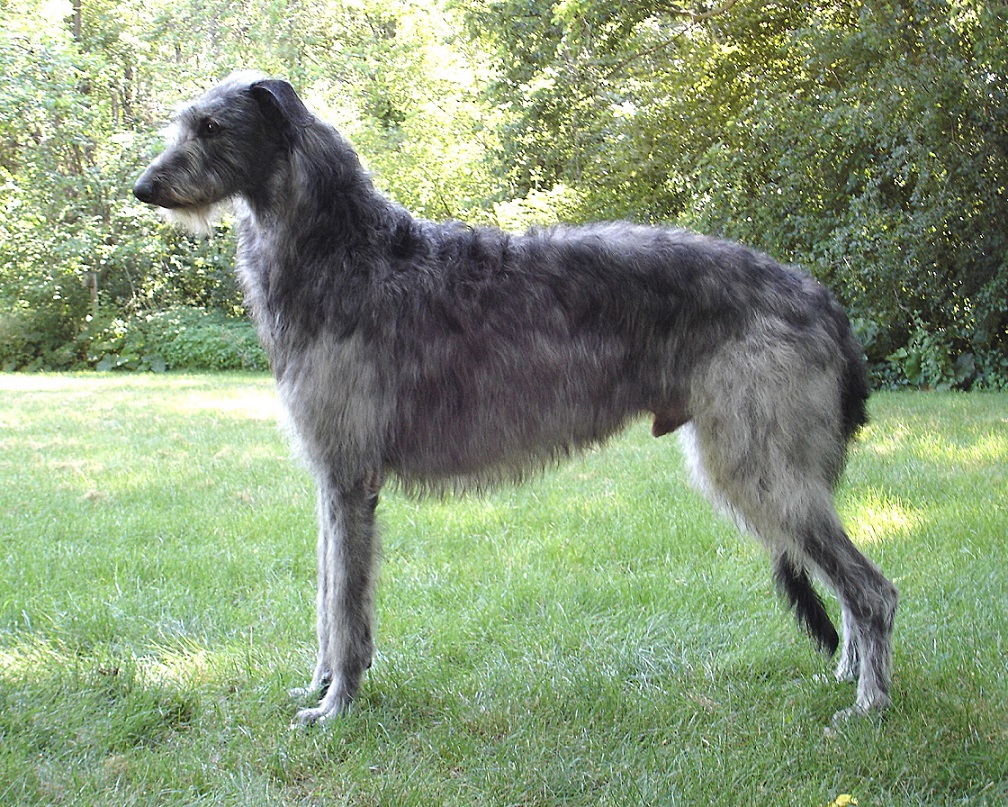
Scottish Deerhound

Navigate through the tabs
Navigate through the tabs below to view the breed's info of your interest.
The breed's info is divided in four sections; namely:
the breed's history ,
the breed's main stats ,
the dog's potential health issues
and finally, how the breed scored in 26 different categories.
All the above information should give you a respectively good overview for the dog of your interest.
Dog Breed's Main Info
The Breed's History:
The origins of the Scottish Deerhound are lost in the Highland mists. Over the centuries, they've been known as Irish wolfdogs, Scottish greyhounds, rough greyhounds, and Highland deerhounds. Whether they were originally used to hunt wolves and then repurposed to hunt the great stags of the Highlands is unknown, but we do know that they were used as far back as the 16th century to hunt and bring down deer.
The deerhounds were highly regarded for their courage and gentle dignity. A nobleman condemned to death could purchase his life with a gift of deerhounds. And only a nobleman could do so; no one beneath the rank of earl could lay claim to a deerhound, which was commonly known as the Royal Dog of Scotland.
The breed suffered under its restricted ownership, however, and there were many times it came close to extinction, most nearly when the clan system of Scotland collapsed in 1745 after the fateful battle of Culloden during the Jacobite rebellion against English rule. By 1769 the breed was in dire straits. Efforts were made to restore the breed to its original glory in the 1820s by Archibald and Duncan McNeill. The breed made its way to America as well.
The first Scottish Deerhound registered by the American Kennel Club was Bonnie Robin in 1886.
During World War I, the breed suffered another decline in numbers when many large estates in Scotland and England were broken up. The Scottish Deerhound became a rare breed again, enjoyed only by a select few.
Today the Scottish Deerhound is still a fairly uncommon breed, appreciated by those who love sighthounds or have an interest because of their Scottish heritage, but more are coming to learn that this is a versatile breed and an all-around exceptional dog. Today the Scottish Deerhound ranks 135th among the 155 breeds and varieties registered by the American Kennel Club.
Country of Origin:
Scotland
Breed Group:
Hound
Height:
2 feet, 4 inch. to 2 feet, 8 inch. (71,12 to 81,28 cm)
Weight:
75 to 110 pounds (34,01 to 49,9 Kg)
Life Span:
8 to 11 years
Potential Health Issues:
Anesthesia Sensitivity,
Hip Dysplasia,
Dilated Cardiomyopathy,
Cystinuria,
Osteosarcoma,
Hypothyroidism,
Gastric Torsion (Bloat),
Factor VII Deficiency,
Allergies
Adaptability
Apartment Living:
First Time Owners:
Sensitivity:
Being Alone:
Cold Weather:
Hot Weather:
Friendliness
Affection With Family:
With Kids:
With Dogs:
With Strangers:
Health and Grooming
Shedding:
Drooling:
Easy To Groom:
Overall Health:
Weight Gain Potential:
Size:
Training
Easiness:
Intelligence:
Mouthiness:
Prey Drive:
Barking or Howling:
Wanderlust:
Need For Exercise
Energy Level:
Intensity:
Exercise Needs:
Playfulness:
Our Mobile Application
Check out Our Mobile Application "Dog Breeds Central"
